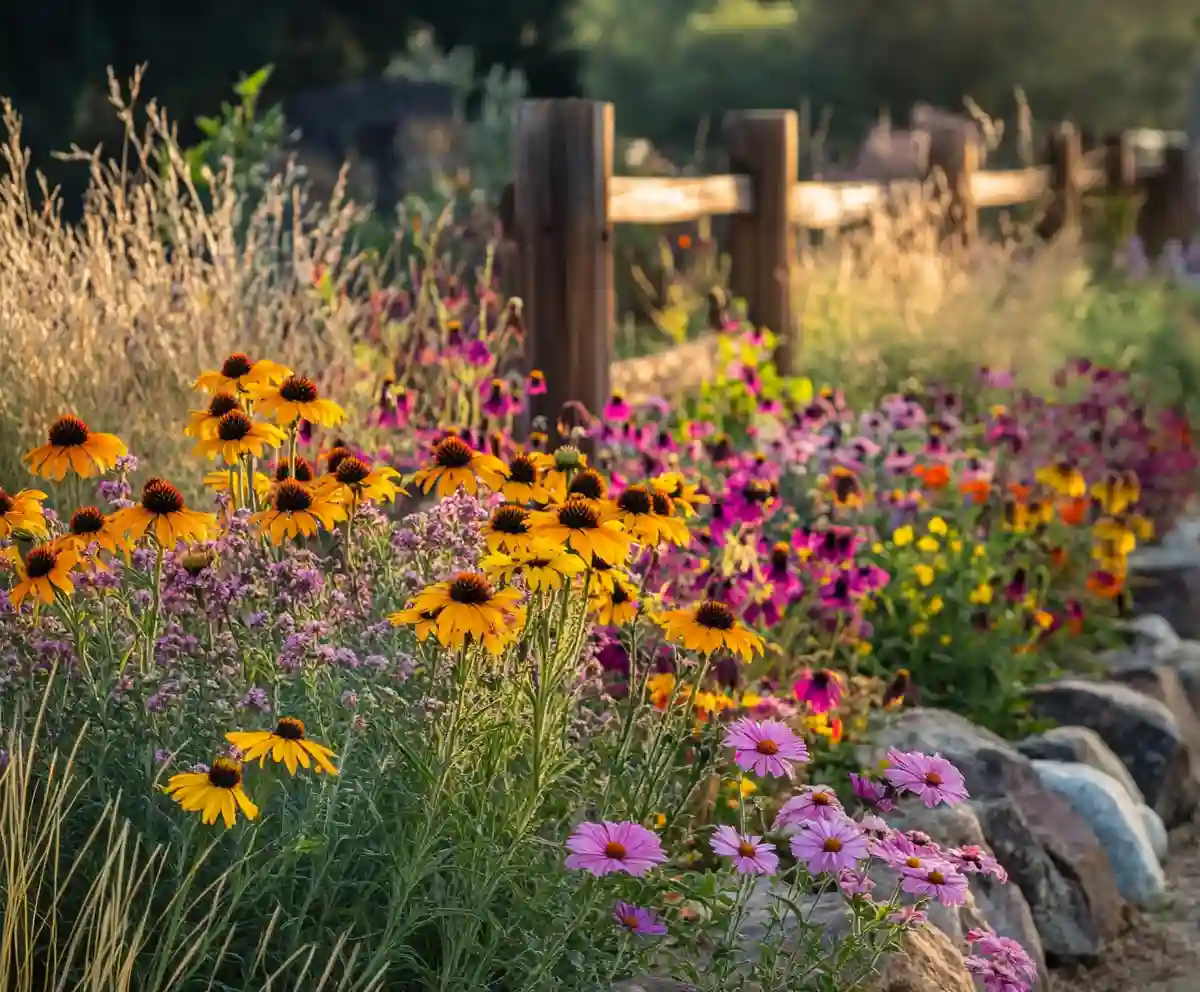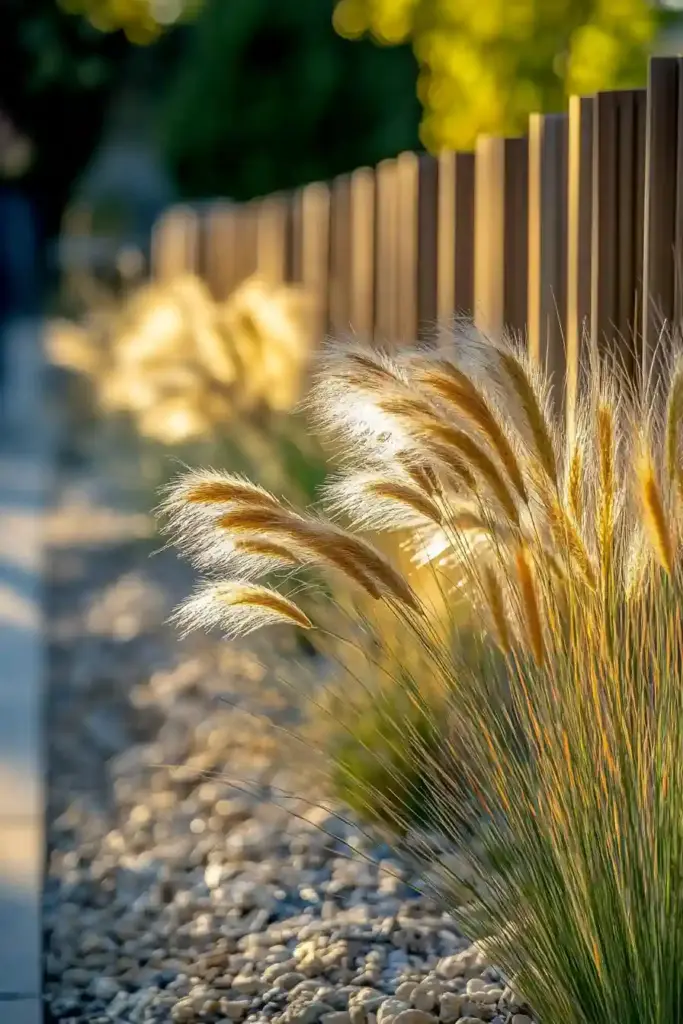If you’re tired of watching your water bill rise while trying to maintain a lush garden, it might be time to embrace a smarter solution: a drought-resistant flower garden along your fence. Not only is this type of garden environmentally friendly, but it’s also stunning and surprisingly easy to maintain. By choosing the right plants and layout, you can create a vibrant fence-side display that thrives in dry conditions—saving both time and water without compromising beauty.
🌿 Getting Started with Drought-Resistant Plants
Creating a drought-resistant flower garden along a fence starts with one smart choice: selecting plants that naturally thrive with minimal water. These low-maintenance beauties not only survive but flourish in dry conditions—making them perfect companions for busy gardeners or regions with limited rainfall.
Some of the best plant types to begin with include succulents and ornamental grasses, which bring texture and movement without demanding constant care. Two standout choices are:
- Blue Fescue – This compact grass forms neat, bluish-green tufts and adds cool-toned contrast.
- Mexican Feather Grass – Graceful and airy, it sways with the breeze and lends your garden a soft, dreamy aesthetic.
These plants do more than just survive dry spells—they thrive with character and charm. Before planting, take time to understand your local climate and sunlight exposure. Most drought-tolerant species prefer full sun, well-drained soil, and minimal interference once they’re established.
🖼️ Designing Your Water-Wise Layout
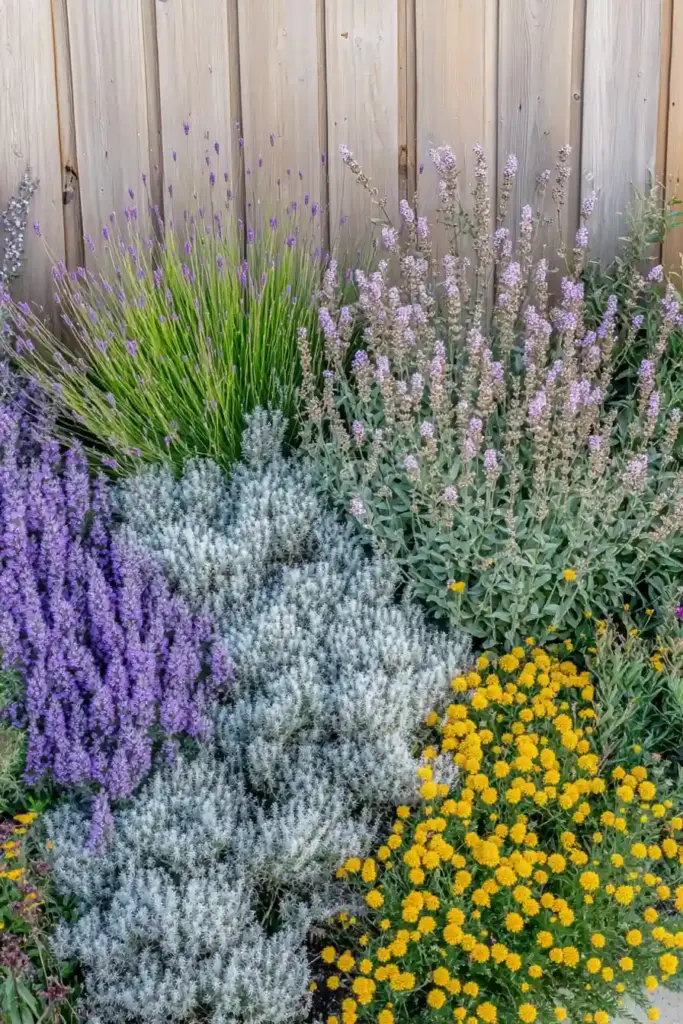
When it comes to a drought-resistant flower garden along a fence, thoughtful design goes a long way. Think of your fence line as a living canvas—one where height, texture, and color work together to create visual harmony without high maintenance.
🌱 Smart Plant Grouping
One of the most effective tricks in water-wise gardening is grouping plants with similar watering needs. This prevents over- or under-watering and promotes a healthier garden overall. Here’s a tried-and-true layout idea to get you started:
- Front row: Low-growing Sedum varieties – colorful, succulent, and tough as nails.
- Middle layer: Lavender and Russian Sage – both fragrant and pollinator-friendly.
- Back row (for height): Karl Foerster Grass – adds vertical structure and movement.
- Accents: Yarrow for bright, clustered blooms that attract butterflies.
✨ Design Tips for Curb Appeal
- Mix textures: Pair soft grasses with bold blooms.
- Use repetition: Plant the same species in small clusters for rhythm.
- Play with height: Layer plants gradually from front to back for depth and cohesion.
By organizing your plants in layers, you’ll create a balanced, professional look that thrives with minimal watering—and your fence line will never look bare again.
🪨 Adding Hardscape Elements for Beauty and Efficiency
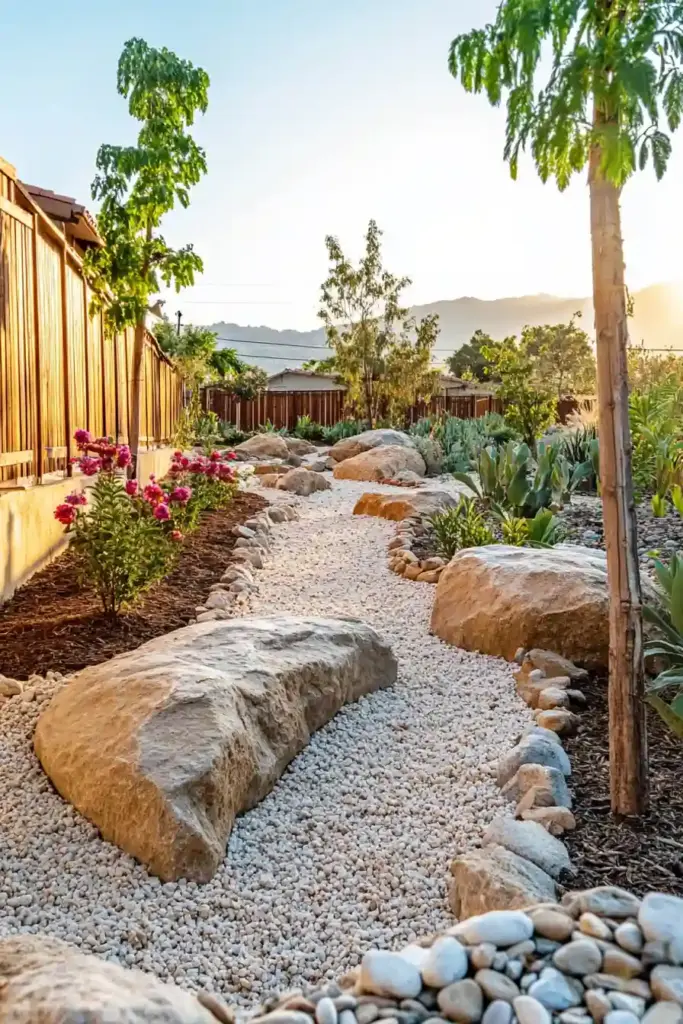
Hardscaping is the secret weapon of any well-designed drought-resistant flower garden along a fence. Not only does it enhance visual appeal, but it also plays a practical role by reducing the amount of space that needs watering—making your garden even more sustainable.
🪴 Rock Garden Elements That Shine
Adding elements like decorative rocks, pebbles, or gravel pathways helps anchor your planting design while giving the garden structure. These features break up the space beautifully and can direct rainwater more efficiently toward your plants.
- Use a mix of rock sizes for visual depth—think small pebbles, medium river rocks, and larger boulders.
- Create rock borders around plant clusters to give definition and reduce runoff.
- Add stepping stones to lead the eye (and foot traffic) through the space without disturbing delicate plants.
🔥 Bonus Benefit: Year-Round Appeal
Unlike mulch or seasonal plants, rock-based hardscaping keeps your garden looking tidy and intentional all year long. It also discourages weeds and retains soil moisture—making your job as a gardener that much easier.
By blending form and function, hardscaping elevates your garden from basic to breathtaking without adding maintenance headaches.
🧑🌾 Maintenance Tips for Drought-Resistant Garden Success
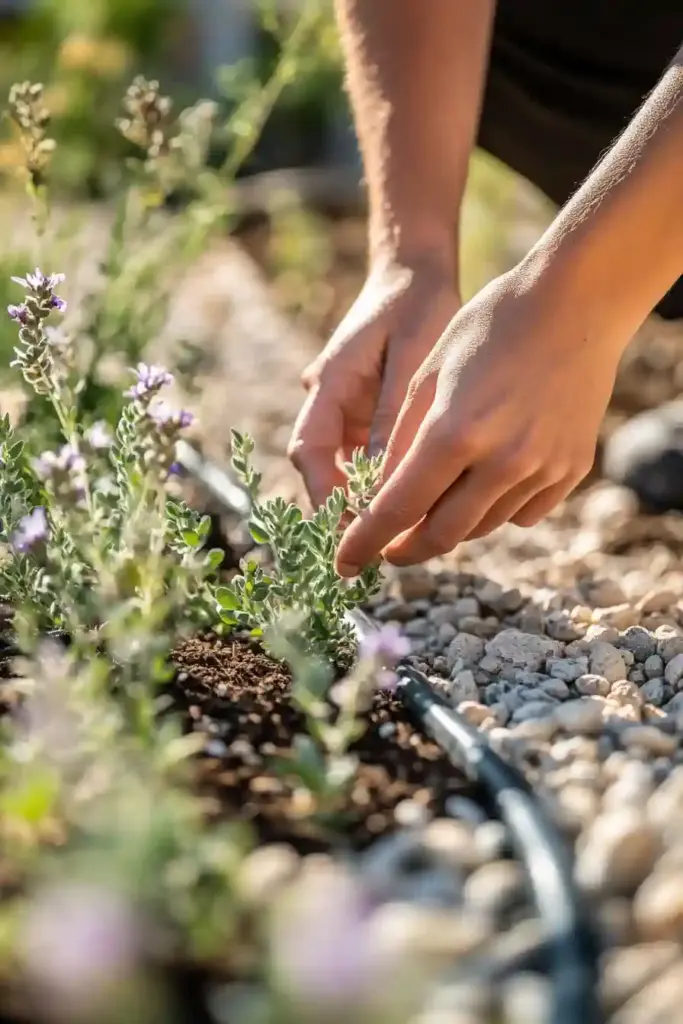
The beauty of a drought-resistant flower garden along a fence is how easy it is to maintain once established. But like any garden, a little smart effort up front leads to long-term rewards.
💧 Master the Art of Deep Watering
Shallow, frequent watering might seem like a good idea—but it’s actually counterproductive. Instead, water deeply and less often. This encourages your plants to grow deep, resilient root systems, which makes them better equipped to handle dry spells.
- Tip: Water early in the morning to reduce evaporation.
- How often? Typically once every 7–10 days, depending on rainfall and plant needs.
🪨 Gravel Mulch = Game Changer
Want a gorgeous garden that also conserves water and fends off weeds? Lay down a 2–3 inch layer of gravel mulch around your plants. This simple step offers several big benefits:
- Locks in soil moisture
- Regulates soil temperature
- Reduces weed growth
- Adds texture and style to your design
Plus, it pairs beautifully with succulents, grasses, and flowering perennials—enhancing the overall look of your space.
With these low-effort techniques, you’ll spend more time enjoying your fence-side retreat and less time fussing with hoses or weeding tools.
🌸 Water-Wise Flowering Options That Wow
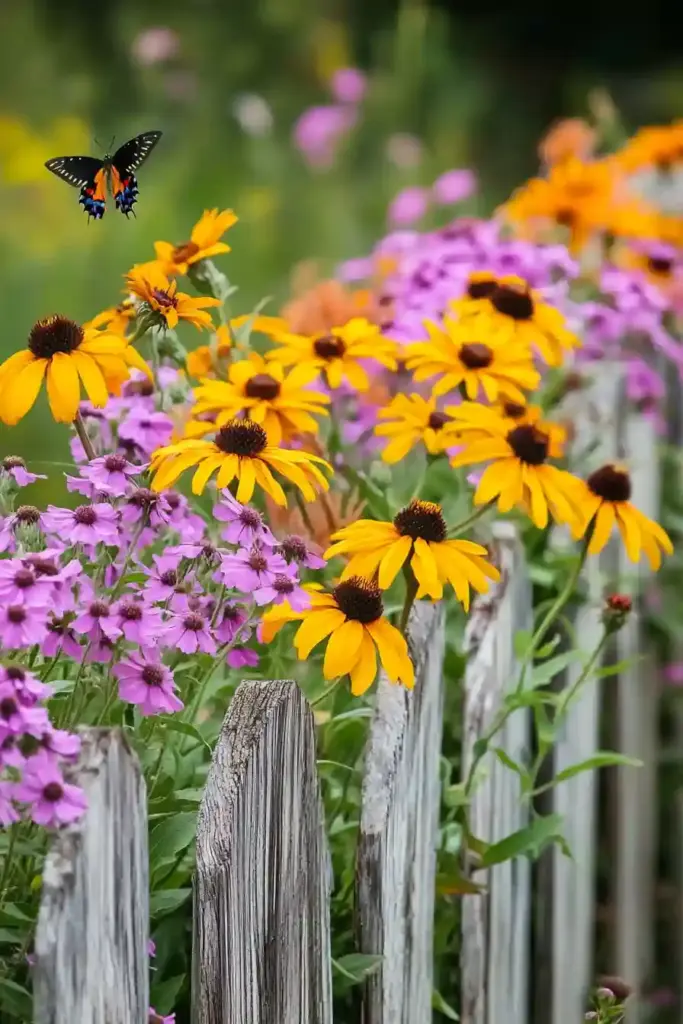
Just because you’re creating a drought-resistant flower garden along a fence doesn’t mean you have to sacrifice color or charm. In fact, some of the most stunning blooms in the garden world thrive in dry conditions—and they bring pollinators, personality, and pop to your landscape.
Here are a few of the top-performing flowering plants that are as tough as they are beautiful:
🌼 Top Drought-Tolerant Flowering Plants
- Echinacea (Purple Coneflower): A native wildflower favorite, it’s low-maintenance and attracts butterflies like a magnet.
- Black-Eyed Susan: These golden-yellow blooms are vibrant and hardy, blooming from summer into fall.
- Salvia: With striking spires of purple or blue, salvia adds vertical color and thrives in hot, dry conditions.
- Butterfly Weed: A must-have for monarchs, this orange-flowered milkweed is drought-tough and pollinator-friendly.
- Lantana: Bursting with multicolor blooms, lantana is a sunny garden superstar that needs very little water to flourish.
🐝 Why They Matter
These flowering options do more than decorate your fence line—they support local ecosystems, reduce your water use, and extend seasonal interest from spring to fall. They’re perfect for busy gardeners who still want that “wow” factor without the weekly upkeep.
🌻 Conclusion: A Smart and Stunning Garden That Works With Nature
Designing a drought-resistant flower garden along a fence is more than just a smart landscaping move—it’s a rewarding way to create beauty with less effort and fewer resources. By choosing the right plants, embracing hardscape elements, and following low-maintenance practices, you can enjoy a lush, colorful space that stays vibrant even through dry spells.
Whether you’re dealing with limited rainfall, looking to cut back on water bills, or simply want a fuss-free garden, this eco-friendly approach is a win-win. Your fence line can now become a flourishing focal point that’s as sustainable as it is stunning.

